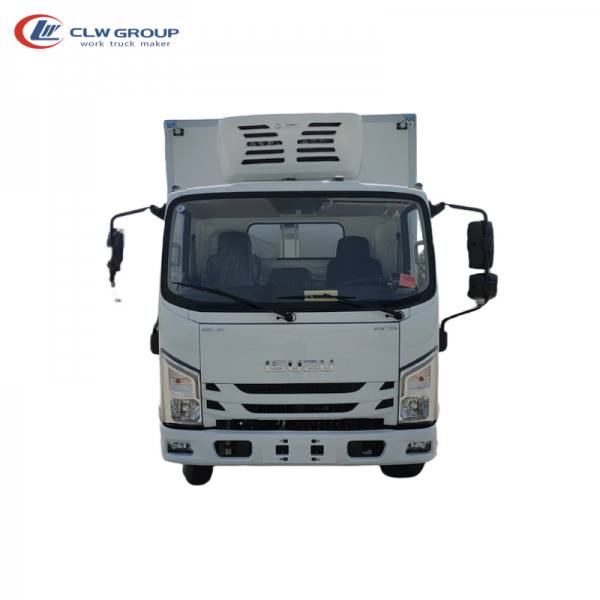The Importance of Understanding Truck Mounted Crane Weight
Introduction Truck mounted cranes are essential pieces of equipment used in various industries such as construction, logistics, and manufacturing. These cranes offer versatility and mobility, allowing for lifting and moving heavy loads in various environments. One crucial aspect to consider when operating a truck mounted crane is its weight capacity. Understanding the weight limits of a truck mounted crane is essential for ensuring safe and efficient operation. In this article, we will delve into the importance of understanding truck mounted crane weight, the factors that influence weight capacity, and the implications of exceeding weight limits. Understanding Truck Mounted Crane Weight Capacity The weight capacity of a truck mounted crane refers to the maximum load that the crane can safely lift and transport. This capacity is typically expressed in terms of tonnage or weight in pounds. It is crucial to adhere to the weight capacity limits specified by the crane manufacturer to prevent accidents, damage to the crane, and injuries to personnel. Factors Influencing Weight Capacity Several factors influence the weight capacity of a truck mounted crane. These factors include the crane's structural design, the stability of the truck chassis, the length of the boom, the angle of operation, and environmental conditions such as wind speed and terrain. Understanding how these factors affect weight capacity is essential for safe crane operation. Structural Design: The structural design of the crane, including the materials used, the configuration of the boom, and the hydraulic system, plays a significant role in determining weight capacity. Cranes with robust structural designs are capable of lifting heavier loads compared to cranes with lighter and less sturdy designs. Truck Chassis Stability: The stability of the truck chassis on which the crane is mounted is crucial for safe crane operation. A stable chassis with a low center of gravity can support heavier loads and minimize the risk of tipping over during lifting operations. Boom Length: The length of the crane's boom also influences its weight capacity. Longer booms can reach higher elevations but may have reduced weight capacity compared to shorter booms. Operators must consider the boom length and weight capacity when planning lifting operations. Angle of Operation: The angle at which the crane operates can affect its weight capacity. Cranes are typically designed to lift heavier loads when operating at lower boom angles. Exceeding the recommended angle of operation can compromise the crane's stability and weight capacity. Environmental Conditions: Environmental factors such as wind speed, temperature, and terrain can impact the crane's weight capacity. Strong winds can reduce the crane's lifting capacity, while extreme temperatures can affect the performance of hydraulic systems. Operators must assess environmental conditions before commencing lifting operations. Implications of Exceeding Weight Limits Exceeding the weight limits of a truck mounted crane can have severe consequences, including accidents, structural damage to the crane, injuries to personnel, and legal implications. When a crane is overloaded, its structural integrity is compromised, increasing the risk of structural failure and collapse during lifting operations. Additionally, exceeding Tanker truck customizations can lead to fines, penalties, and legal liabilities for the crane operator and the company. Safety Precautions for Operating Truck Mounted Cranes To ensure safe and efficient operation of truck mounted cranes, operators must adhere to the following safety precautions: 1. Conduct Regular Inspections: Before each lifting operation, conduct a thorough inspection of the crane, including the boom, hydraulic system, controls, and safety devices. Any signs of damage or wear should be addressed promptly. 2. Verify Load Weight: Determine the weight of the load to be lifted and ensure that it does not exceed the crane's weight capacity. Use calibrated weighing equipment to accurately measure the load weight. 3. Plan Lifting Operations: Develop a lifting plan that considers the weight capacity of the crane, the boom length, the angle of operation, and environmental conditions. Communicate the lifting plan to all personnel involved in the operation. 4. Use Outriggers and Stabilizers: Deploy outriggers and stabilizers to enhance the stability of the crane during lifting operations. Ensure that the outriggers are properly positioned and secured before lifting. 5. Monitor Load Movement: Keep a close eye on the movement of the load during lifting operations. Avoid sudden movements or overloading the crane beyond its capacity.  Conclusion Understanding the weight capacity of a truck mounted crane is essential for safe and efficient operation in various industries. By considering factors such as structural design, truck chassis stability, boom length, angle of operation, and environmental conditions, operators can ensure that lifting operations are conducted within safe limits. Exceeding weight limits can lead to accidents, damage to the crane, injuries, and legal liabilities. By adhering to safety precautions and best practices, operators can minimize risks and ensure the successful operation of truck mounted cranes.
Conclusion Understanding the weight capacity of a truck mounted crane is essential for safe and efficient operation in various industries. By considering factors such as structural design, truck chassis stability, boom length, angle of operation, and environmental conditions, operators can ensure that lifting operations are conducted within safe limits. Exceeding weight limits can lead to accidents, damage to the crane, injuries, and legal liabilities. By adhering to safety precautions and best practices, operators can minimize risks and ensure the successful operation of truck mounted cranes.